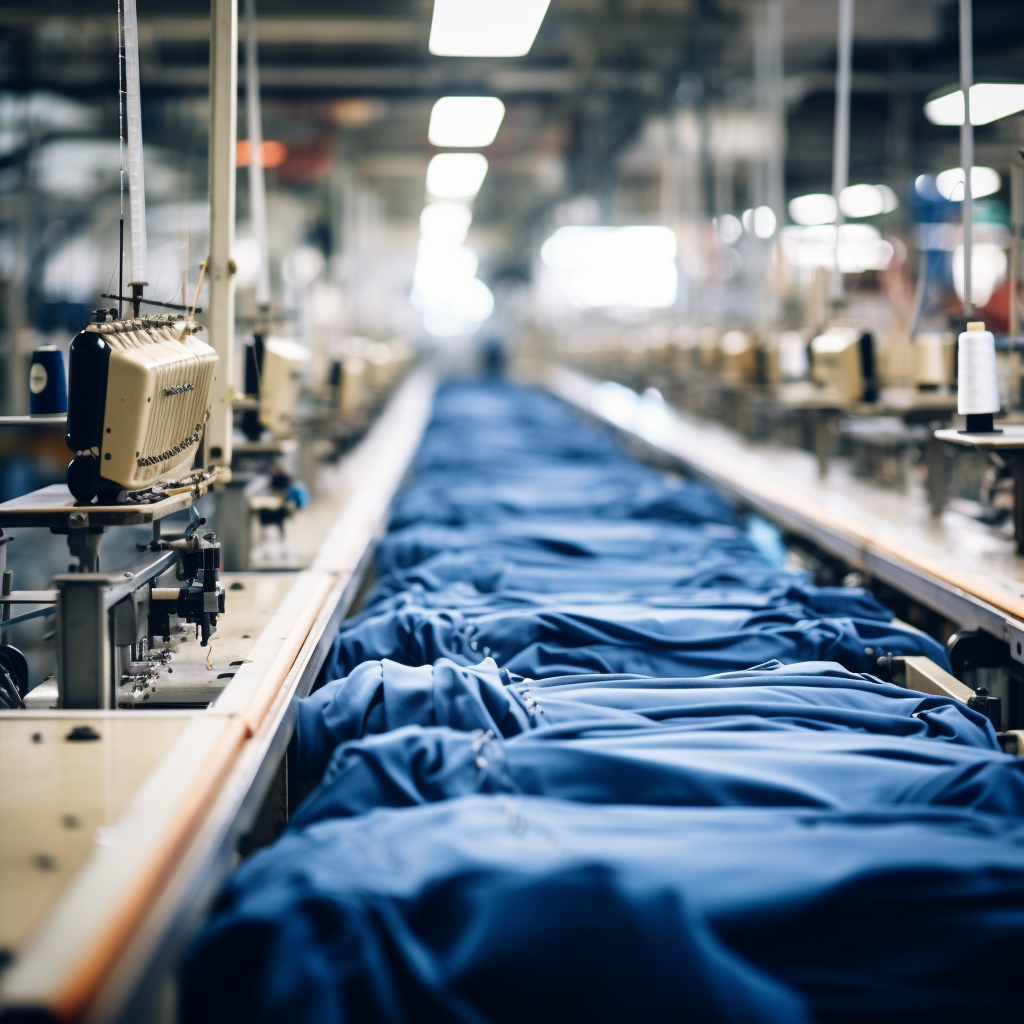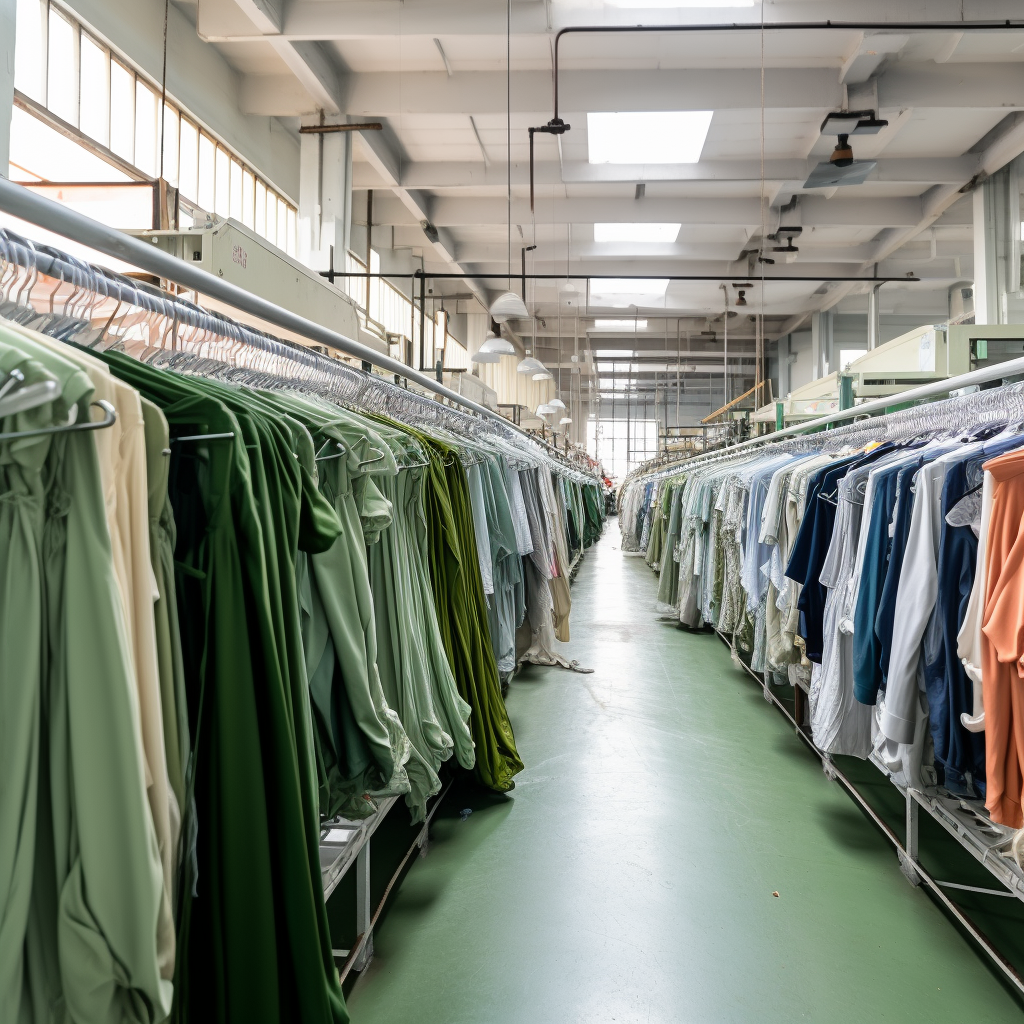Fast Fashion: How to Drastically Reduce Lead Times in Garment Production


Lead time refers to the total time it takes from receiving an order to delivering the finished garments to the customer. It includes the time for procuring raw materials, pattern making, grading, marking, cutting, sewing, finishing, quality checking, packing and dispatching. Reducing lead time is critical for garment manufacturers to stay competitive and meet customer expectations. Shortened lead times allow manufacturers to respond faster to market demands and changes in fashion trends.
This article will provide an overview of the garment production process and discuss key strategies that manufacturers can implement to reduce lead times in their operations. Understanding where delays occur and bottlenecks exist provides a roadmap for targeted improvement efforts. By taking a systematic approach, garment manufacturers can optimize their production workflow and supply chain to significantly shorten lead times.
Understanding the Garment Manufacturing Process
Overview of the Steps in Garment Production
The typical steps in garment manufacturing include:
Design and Pattern Making: The product's design is created, along with paper patterns that will be used for cutting fabric pieces.
Grading: The master patterns are graded into multiple sizes based on the size chart.
Marking and Fabric Inspection: Fabric rolls are inspected and markers are created for optimal placement of pattern pieces.
Cutting: Fabric layers are arranged on cutting tables and cut according to the paper markers.
Sewing: Cut fabric pieces are stitched together to assemble garment components, construct the product and add decorative trims.
Finishing: The completed garments undergo pressing, buttonholing, button attaching and other finishing processes.
Quality Inspection: Each garment is thoroughly checked against specifications.
Packaging and Dispatch: After final inspection, garments are packaged and shipped to customers.
Identifying Where Delays Can Occur
Delays can crop up at any stage of garment production. Some common areas where hold-ups tend to occur include:
Procurement of fabrics if suppliers are unreliable or inventory falls short of demand forecasts.
Marking and cutting if fabric quantities are inaccurate or layering is not optimized.
Sewing when there are machine breakdowns, poor operator skill or imbalanced workloads.
Finishing when processes are not standardized and bottlenecks occur in quality checking.
Dispatch if packaging, loading and documentation processes are inefficient.
By analyzing their production workflow, manufacturers can pinpoint specific processes that tend to lag behind and cause delays. This allows them to focus improvement efforts on the major bottlenecks first.
Strategies to Improve Material Planning
Accurate Fabric Demand Forecasting
The first step to efficient material planning is creating accurate forecasts of future fabric demand. Factors to consider include:
- Historical sales data for style and color trends
- Market research and feedback on upcoming fashion preferences
- Orders in hand or expected from key accounts
- Retailer planning calendars and projected order volumes
- Analysis of best and worst sellers from past seasons
By studying historical performance and sales projections, manufacturers can estimate fabric needs more precisely. Relying solely on past usage patterns is insufficient. A systematic forecasting approach helps plan minimum fabric quantities and ensure availability.

Building Relationships with Reliable Suppliers
Fabric delays are a common reason for extended lead times in garment production. Establishing long-term relationships with tried and trusted vendors is vital. Reliability, quality and consistency should drive supplier selection.
Manufacturers should streamline the procurement process by identifying a limited pool of strategic suppliers. In-person visits to mill facilities allows assessment of production capabilities and quality control. Contracts can lock in preferred pricing and terms for bulk fabric volumes. Collaborative planning also helps match supplier output to projected demand.
Maintaining Optimal Fabric Inventory Levels
Carrying too much inventory ties up working capital and incurs storage costs. Insufficient stocks lead to material shortages that delay production. The ideal inventory levels balance both extremes.
Analyzing historical usage patterns allows defining of minimum, maximum and re-order levels for each fabric type. Safety stock provides a buffer for variability in demand. Inventory should be monitored and replenished based on predetermined reorder points. This prevents shortages without accumulating excess stock.
With improvements in demand planning and procurement, garment manufacturers can ensure a steady supply of fabric and eliminate material-related delays.
Improving Cutting Room Efficiency
Investing in Automated Cutting Machines
Cutting fabric layers manually using scissors is time-consuming, labor-intensive and has accuracy issues. Automated cutting machines utilize digitized markers and offer immense time savings.
Computerized systems like Gerber or Lectra first scan paper markers to create digital patterns. Fabric is then precisely cut by a moving blade along the programmed outlines. Automated cutters minimize fabric consumption and speeds up the cutting process.
Despite the high initial investment, automated cutters offer a quick ROI through substantial reductions in labor and material costs. Their efficiency, consistency and accuracy results in higher cutting room throughput.
Optimizing Cutting Room Layout and Workflow
The cutting room layout should allow smooth and logical flow of materials between stations. Separate zones should be defined for:
- Incoming fabric inspection and storage
- Fabric spreading and layering
- Marker making
- Cutting tables
- Storage of cut components
Markers and fabrics should move sequentially from station to station to minimize transportation time. Adequate lighting and ventilation must be provided. Any obstructions or bottlenecks should be addressed. A large cutting table allows laying more fabric layers to cut multiple markers simultaneously. Overall equipment effectiveness metrics can help identify process improvements.
Monitoring and Reducing Fabric Waste
Fabric is the most expensive raw material in garment manufacturing. Excess waste directly impacts costs and profitability. Cutting room waste can be minimized by:
- Using markers optimally to maximize fabric utilization
- Training operators to handle materials correctly
- Tracking and analyzing waste metrics by fabric type
- Identifying high-waste processes and improving them
- Investing in automated fabric spreading and cutting machines
With efficient material planning, inventory control and optimized cutting operations, manufacturers can experience fewer fabric-related delays.
Increasing Sewing Productivity
Balancing Workloads Between Sewing Lines
Imbalances in operator workloads often reduces output at bottleneck operations. Smoothing work distribution across multiple sewing lines can improve overall productivity. Time and motion studies help determine standard minutes required per operation. Daily targets can be assigned based on operator capability and machine capacity.
Workloads should be adjusted periodically to account for order variations, operator skill levels and machine downtimes. Balancing the sewing floor allows each operation to run at optimal pace and throughput improves.
Operator Training Programs
Lack of adequate training often affects operator performance. Regular skills training helps enhance productivity. Training programs should cover:
- Correct machine operation and maintenance
- Right procedures for tasks like pocket joining, collar stitching etc.
- Quality standards for each operation and product inspection
- Workplace organization, housekeeping and safety
Each new operator must undergo comprehensive induction training. Existing operators should refresh skills through periodic refresher training. Friendly competitions can spur productivity improvements.
Preventive Maintenance for Sewing Machines
Machine breakdowns and repairs are frustratingly common causes of lost production time. While some failures are unavoidable, regular preventive maintenance minimizes downtimes. This involves:
- Daily cleaning and lubrication activities by operators
- Regular inspection of key components
- Replacement of worn parts as per schedule
- Recording equipment downtimes and mean time between failures
With stronger operator skills and improved machine reliability, manufacturers can maximize sewing line efficiency and productivity.
Streamlining the Finishing Process
The finishing department in a garment factory involves important processes like inspection, pressing, packaging and dispatching. This stage is critical in ensuring products meet quality standards before shipment. However, inefficient finishing operations can create bottlenecks that delay lead times. By streamlining workflows, adding resources and adopting technology, manufacturers can optimize finishing for faster delivery.
Reducing Bottlenecks in Inspection, Pressing and Packaging
In many factories, a single centralized inspection station results in output delays as each garment is verified. Decentralized in-line inspection at sewing stations improves workflow. Workers check their own work while supervisors do random audits. Multiple pressing stations also prevent tailbacks.
Packaging operations should be adequately staffed to match production volumes. Parallel assembly lines can be dedicated for tasks like folding, inserting polybags, box filling etc. Adequate equipment and space for temporary storage and movement of packed cartons is needed. Smoother material flows between stations minimizes waiting time.
Implementing Quality Control Procedures
Defective products that escape inspection will require rework downstream, interrupting the finishing process. Stringent quality control right from material inspection to sewing and finishing stages is vital.
Worker training on defect identification and quality standards for each process enables catching issues early. Inspection checkpoints must be added at cutting and sewing stages before goods reach finishing. Statistical quality control techniques like acceptance sampling can be used.
Each quality failure should trigger root cause analysis and corrective actions to prevent recurrences. With improved quality culture and process controls, defect rates can be minimized for faster finishing.
Adopting Barcoding and RFID Tracking
Lack of real-time visibility on work-in-progress inventory makes production planning and scheduling difficult. Implementing barcoding or RFID tracking provides transparency.
As goods move through finishing, barcode scanning or RFID readers record product quantities entering and leaving each stage. The data feeds into inventory management software for real-time WIP monitoring.
Production managers gain insights to adjust planning and staffing for smoother workflow. Automated tracking also improves inventory accuracy in finishing and dispatch.
Optimizing Processing and Material Handling
Efficient equipment layout, organized workstations and clear material flow patterns can boost finishing productivity. Loading and unloading points should be ergonomically designed to avoid fatigue. Storage racks, carts and conveyors must align to work sequences.
Adequate lighting, ventilation and utilities in pressing/packing areas improves output. Staffing levels should match daily production volumes across shifts to avoid work buildup. With optimized processing and material handling, the finishing process can operate faster.
By adopting Lean practices, garment manufacturers can transform finishing from a slow-moving bottleneck into a smooth-flowing operation that accelerates lead times.

Conclusion:
Reducing lead times allows garment manufacturers to become more responsive to customer needs and dynamic market trends. A holistic analysis of the production workflow is needed to identify and eliminate sources of delay across material planning, cutting, sewing and finishing processes.
Investments in automated technologies and lean manufacturing methods can help streamline operations and remove wasteful activities. At the same time, upgrading worker skills through training, implementing quality control procedures and balancing workloads are equally important.
By taking a systematic approach and optimizing the entire supply chain, garment producers can achieve shorter lead times for competitive advantage. Harnessing data from barcoding and RFID tracking provides real-time production monitoring needed for continuous improvement.
With diligent efforts and adopting proven best practices, garment manufacturers can significantly cut lead times from raw material procurement to finished goods delivery. The collective impact of minimizing delays at each production stage adds up to faster fulfillment of customer orders and getting new products to market quicker.





-500x500.jpg)
-500x500.jpg)
-500x500.jpg)
-500x500.jpg)
-500x500.jpg)